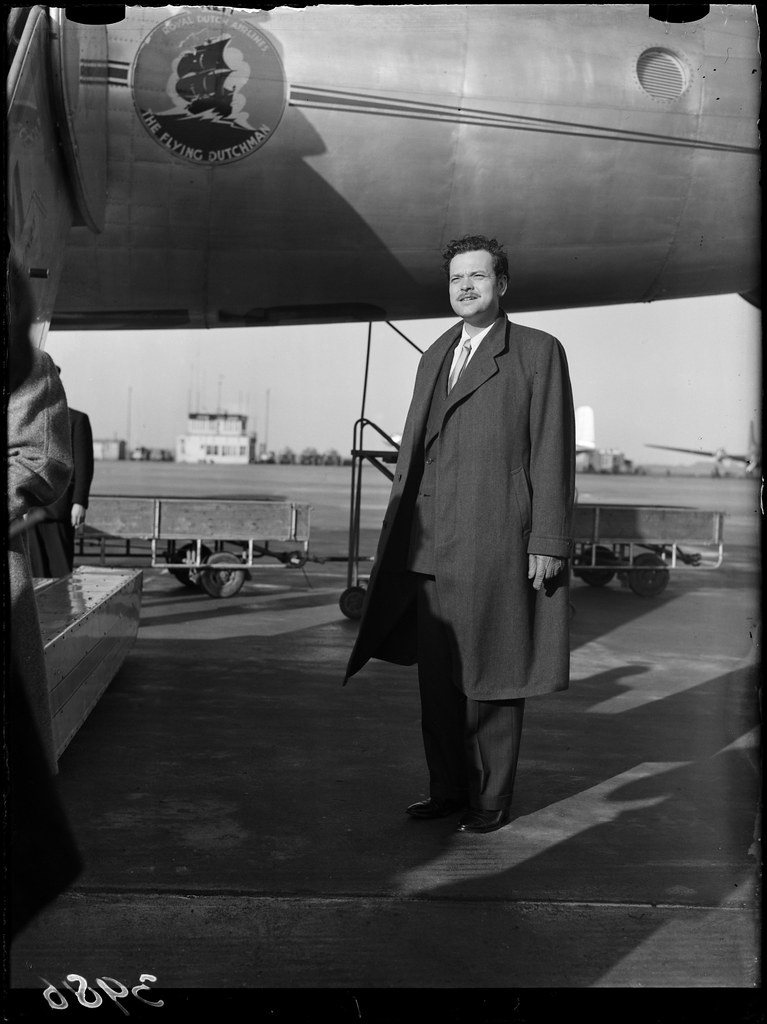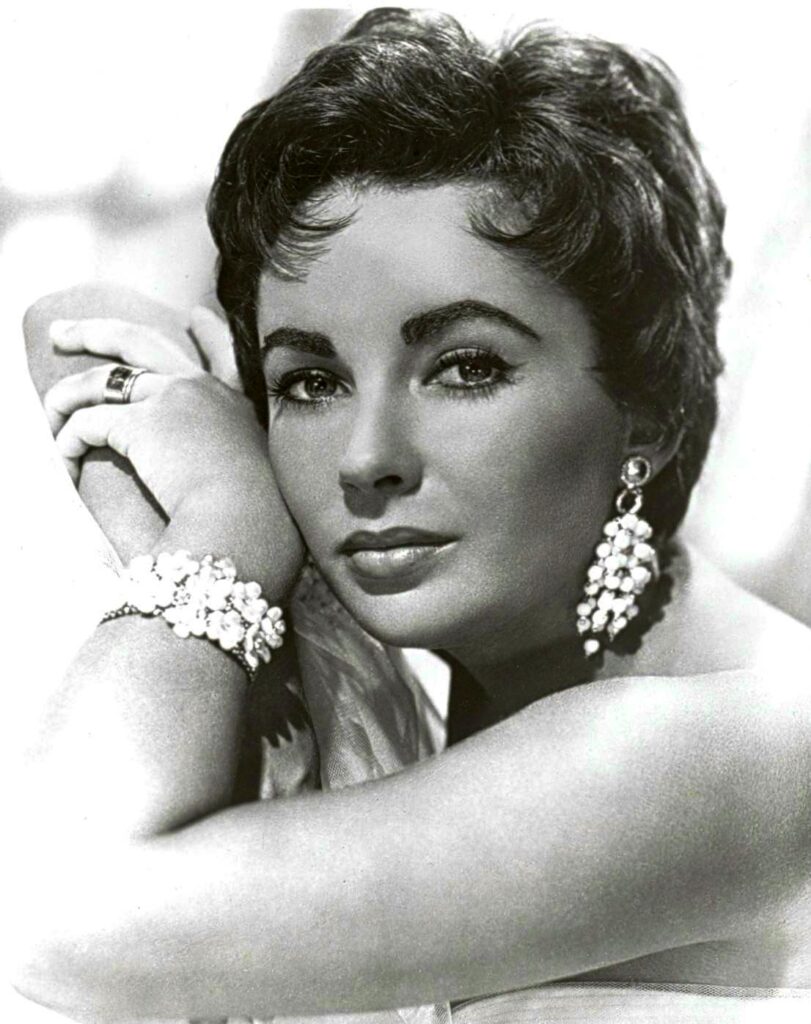
Hollywood has always captivated us with its dazzling stars, their on-screen charisma, and the seemingly perfect lives they lead under the constant glare of the spotlight. We admire their talents, follow their romances, and often, we imagine them as extensions of the characters they portray — suave, sophisticated, heroic, or effortlessly glamorous.
It turns out, the Golden Age of Tinseltown, often synonymous with class and sophistication, harbored a darker, more eccentric side. Many of its most legendary stars were far from the idealized images projected onto the silver screen. They had vices, addictions, and obsessions that made them, in their own unique ways, truly weird, sometimes unsettling, and undeniably human.
Join us on a fascinating journey as we pull back the velvet curtain to reveal the hidden depths of some of Hollywood’s most iconic figures. From mind-altering experiments to peculiar phobias, and from intense secret hobbies to shocking personal behavior, these are the stories of stars who were much, much different when the cameras weren’t around. Get ready for some jaw-dropping revelations!

1. **Cary Grant – The Acid Evangelist**When you think of Cary Grant, images of sophisticated charm, witty banter, and debonair style immediately come to mind. He was the epitome of the leading man, gracing the screen with an elegance that seemed almost untouchable. Yet, behind that impeccably tailored exterior lay a turbulent mind, deeply scarred by a traumatic childhood and grappling with significant mental health issues.
Born into extreme poverty in Bristol, Grant’s early life was marked by hardship, including a cheating father and a mother who inexplicably vanished — only later to be discovered his father had wrongly committed her to an insane asylum. This profound instability haunted him throughout much of his acting career, leading him to seek unconventional methods for inner peace and understanding.
It was his third wife who introduced him to LSD therapy, an experience that, by his own account, “blew his mind.” From 1958 to 1961, Grant embarked on an intense period of self-exploration, reportedly dropping acid a minimum of 100 times. He wasn’t just experimenting; he became an evangelical advocate, genuinely believing it held the key to universal enlightenment and urging everyone else to embrace the psychedelic journey.
Some of his recollections from these sessions were, shall we say, rather unusual. He fondly recalled one vision where he transformed into a “gigantic wang and blasting off into space.” His advocacy only ceased when the counterculture movement embraced acid, making him wary of his gentlemanly image clashing with the burgeoning hippie scene.
Grant’s LSD journey offers a startling glimpse into a star desperate for self-discovery and healing, showcasing a vulnerability and a willingness to explore the fringes of consciousness that completely defied his public persona. It’s a testament to the complex layers that can exist beneath even the most polished Hollywood veneer.

2. **Peter Lorre – The Morphine Shadow**Peter Lorre’s distinctive droopy eyes and melancholic expression were often leveraged for roles as oddballs and villains, making him an unforgettable presence in films like “Casablanca.” His on-screen intensity was legendary, but what many fans didn’t realize was that his unique look and performance were often fueled by a profound and devastating addiction.
Lorre spent virtually his entire career under the influence of morphine. This wasn’t a habit he picked up in Hollywood; his substance misuse issues began much earlier in his native Europe following an appendix operation. Doctors, in an effort to manage his pain, kept the young actor so heavily medicated that he developed a crippling addiction that would follow him for the rest of his life.
By the time he starred as the chilling serial killer in Fritz Lang’s “M,” his addiction was an open secret within acting circles. Friends morbidly joked that the “M” in the film’s title truly stood for “morphine,” highlighting how deeply entrenched his dependency had become. The move to Hollywood did little to change things; if anything, his struggles escalated as he began misusing prescription pills and cough medicine alongside morphine.
Tragically, his addiction began to dictate his career choices. There were stretches where Lorre would pick roles specifically based on how well they accommodated his drug use. He famously took the part of Mr. Moto in an eight-film series, not just for the money, but because the production allowed him to indulge his habit freely in his trailer.
There are even reports of entire films being shot with Lorre so intoxicated he could barely climb a set of stairs. And yet, through all of this, he still managed to out-act almost everyone else on set. It’s a sobering and remarkable reflection of a talent battling a personal demon, and a reminder that behind every compelling performance, a complex human story is often unfolding.

3. **Orson Welles – The Nose Collector**Orson Welles was a titan of cinema, a director, actor, writer, and producer whose genius was matched only by his formidable presence. He was a larger-than-life figure in every sense, and apparently, that extended to his face, or rather, what he *thought* about his face. Specifically, Welles believed his nose was far too small for his undeniably rotund visage.
This seemingly trivial concern blossomed into a full-blown obsession, leading him to utilize the ample resources of studio makeup departments in the most peculiar way. For nearly every movie appearance he made, Welles sported a fake nose. And these weren’t just subtle enhancements; his preference leaned heavily towards the “bigger the better.”
Initially, these prosthetic noses might have been of relatively normal sizes, but as his career progressed, they grew increasingly outlandish. By the end, they were described as “misshapen, bulging things that swelled out the center of his face like a lost alien chestburster making a dash for the nearest exit.” It’s hard to imagine the man behind “Citizen Kane” being so particular about such a detail.
His commitment to these prosthetics was unwavering. He was absolutely unwilling to work without them. A telling anecdote recounts a time when he was simultaneously trying to finish directing “Macbeth” while taking an acting gig on “Black Magic.” The misplaced box of his beloved fake noses took absolute priority over his directing commitments, causing significant disruption.
And the weirdness didn’t stop there. After each film wrapped, Welles would keep his collection of noses, even going so far as to name them. He stored them in his Hollywood home, occasionally bringing them out at parties to perform magic tricks with them. It’s a truly bizarre quirk from one of cinema’s greatest minds, reminding us that genius and eccentricity often walk hand-in-hand.

4. **Joan Crawford – The “Mommie Dearest” Nightmare**To the outside world, Joan Crawford was the epitome of a Hollywood success story: a three-time Oscar-nominated actress, a philanthropist who adopted four children, and a woman who even reportedly had a steamy one-night stand with Marilyn Monroe. She projected an image of glamour, control, and maternal devotion. Yet, beneath this carefully constructed façade lay a woman described by those closest to her as anything but.
According to her adopted daughter, Christina Crawford, the star was an egomaniac consumed by jealousy. Christina’s infamous book, “Mommie Dearest,” published a year after Crawford’s death, painted a horrifying picture of a mother from hell, shattering the public’s perception of the beloved actress.
The book was filled with shocking revelations, including Crawford’s lie to Christina that her birth mother was dead (she wasn’t), and vivid descriptions of intense meltdowns, such as when Crawford discovered her daughter’s dresses hung on despised wire hangers. Even more harrowing were the accounts of physical abuse that Crawford allegedly inflicted upon her children.
While “Mommie Dearest” has its detractors, with two of Crawford’s other adopted children disputing Christina’s account, its plausibility is bolstered by other documented aspects of Crawford’s behavior. She navigated “shady back channels” to adopt her children, leading to one instance where her fifth adopted child was reclaimed by his furious birth mother just days after arrival.
Furthermore, Crawford’s legendary and bitter rivalry with the equally strange Bette Davis is well-documented. One particularly Machiavellian act involved Crawford sabotaging her own film’s box office performance specifically to prevent Davis from winning her third Oscar. These stories collectively paint a disturbing portrait of a woman whose private life was a stark contrast to her public image, revealing a deeply troubled and controlling personality.
Read more about: Still Burning Bright: A Look at The Towering Inferno’s Main Actors Who Are Still With Us

5. **W.C. Fields – The Misanthropic Drunk**W.C. Fields carved out a niche in Hollywood playing misanthropic, alcoholic curmudgeons, but what many didn’t realize was that his iconic screen persona was hardly an act. The real-life Fields was, by all accounts, just as moody, intoxicated, and generally cantankerous as the characters he famously portrayed.
The overweight, mottled star was more or less continuously drunk throughout his entire career. His obsession with liquor extended to an almost paranoid fear of being caught without a drink, leading him to hoard an astonishing amount of alcohol. He reportedly kept enough liquor in his attic to sustain him for 25 years, a move some believed was an insurance policy against the potential return of Prohibition.
Inevitably, this profound dependency had a significant impact on his professional life. Late in his career, Fields would demand a hefty $15,000 for each screenplay he wrote. Producers foolish enough to meet his price often received little more than some vague scrawlings on the back of an envelope, if even that, highlighting his declining work ethic and focus.
But his eccentricities weren’t limited to his drinking habits. Fields apparently harbored a strange delight in tormenting ordinary people. According to his old friend, the legendary Groucho Marx, Fields would hide behind bushes on his front lawn and shoot at unsuspecting passersby with a BB gun. This rather bizarre and antisocial hobby paints a picture of a man who truly embraced his misanthropic tendencies, both on and off the screen, making him one of Hollywood’s most genuinely peculiar personalities.

6. **Peter Sellers – The Purple Phobia**Peter Sellers, the brilliant British actor known for iconic roles like Doctor Strangelove, was a comedic genius on screen. Privately, however, he was perhaps even stranger than his most legendary fictional weirdos, though his strangeness wasn’t the bumbling, goofy kind. By numerous accounts, Sellers was a monumental “butthead,” often making life unbearable for those around him.
He was infamous for his “nightmare” behavior in real life, marked by explosive screaming tantrums on set that could halt production. At home, he would frequently freak out at his wives, smashing crockery and even threatening them with his shotgun. He also had a disturbing habit of getting lower-level crew members fired as a way to vent frustrations he couldn’t direct at more powerful figures like directors and producers.
Beyond his volatile temper, Sellers was described as vaguely racist and profoundly superstitious. These traits converged in a particularly bizarre way during his collaboration with acclaimed director Vittorio de Sica on “After the Fox.” Sellers became convinced that the Italian director possessed some form of “supernatural knowledge.”
This conviction led to one of his most peculiar phobias. While working on the film, Sellers witnessed de Sica react with extreme distress when a script girl wore purple, declaring it to be “the color of death.” Sellers took this literally and became utterly convinced that the color purple could be lethal. He subsequently refused to be in any room containing the color and would unleash further screaming tantrums if he inadvertently came into contact with it. It’s a bizarre and revealing insight into the volatile and deeply superstitious mind of a comedic legend.

7. **Elizabeth Taylor – The Scandalous Diva**Elizabeth Taylor was a screen icon whose private life often overshadowed her incredible work, creating a mental image so vivid it sometimes feels like it eclipsed her actual performances. Her hell-raising was so infamous that the Vatican itself reportedly denounced her! Now, of course, part of that denouncement was simply due to the social mores of the time, and let’s be real, a good chunk was likely straight-up misogyny. How many endlessly drunk male Casanovas ever got called out by the Pope, right?
But at the same time, Taylor was a total force of nature, almost as addicted to controversy as she was to pleasure. Her life was a whirlwind of eight marriages, countless affairs, and a seemingly endless stream of opportunities to get drunk, all while taking immense pride in the offense she caused. Her behavior wasn’t just scandalous; sometimes, it was truly outrageous in a way only a Hollywood legend could pull off.
Take, for instance, the time she married and divorced Richard Burton *twice*. You’d think that would be enough drama for one lifetime, but no! When their second marriage ended, Taylor was so utterly furious that she got engaged again just to spite him. This wild energy came to a head while working on Noël Coward’s “Private Lives,” where she and Burton famously brought out the absolute worst in each other. They’d show up drunk, break character during performances, and even skip shows entirely.
The ultimate act of defiance happened when Taylor missed a show, and a fed-up Burton jetted off to Vegas to marry Sally Hay. The news hit Taylor like a bombshell, and she responded by immediately announcing her engagement to Victor Luna, completely upstaging Burton. Talk about a power move! Despite all the drama, Taylor always maintained that she never hated Burton, even claiming later in life that they would have married a third time if he hadn’t tragically passed away. Their relationship was a tumultuous, unforgettable saga that redefined celebrity romance.
Read more about: Text Message Turmoil: Inside the Explosive Feuds Rocking Pop Divas and Hollywood’s Elite

8. **Katharine Hepburn – The Intimate Maverick**Katharine Hepburn, the legendary screen goddess, was a fiercely independent woman who truly lived life on her own terms. She possessed such an unyielding spirit that it often seemed easier to shift the entire world than to make her bend to social pressures. And in the mid-20th century, that kind of steel was absolutely necessary, especially given her unconventional approach to romance and relationships.
Interestingly, Hepburn had a fondness for romance with women but a distinct disinclination to take that romance into the bedroom. She navigated relationships as if she were married to both women and men, all while acting like it was simply no big deal. For a woman to live so openly and authentically in an era marked by strict social conservatism truly showcased her iron resolve and paved a unique path for herself.
As admirable as Hepburn’s independent spirit was, her determination sometimes veered into truly strange territory. After reportedly trying intercourse just once and deciding she absolutely hated it, Hepburn became a passionate, almost militant, hater of nudity. This wasn’t just a personal preference confined to her own body or even avoiding real-life encounters with nudity.
Her aversion to anything that even faintly hinted at desire was so strong that she would actually storm out of movies if a scene came on where someone was au naturel! Imagine being that committed to your personal boundaries that you’d ditch a film over a single glimpse of skin. It’s a fascinating, if perplexing, insight into a woman who defied every expectation and forged her own wildly original path.
Read more about: Unpacking ‘Honey Don’t’: Ethan Coen and Tricia Cooke’s Steamy, Sun-Drenched Neo-Noir That’s Anything But Basic

9. **Clark Gable – The Fastidious Party Animal**Whoever first coined the phrase “Cleanliness is next to godliness” clearly didn’t have Clark Gable in mind! This heavy-drinking, party-loving animal was probably the absolute antithesis of everything his contemporaries might have considered godly. Yet, there was one peculiar aspect of his personality that was apparently quite close to the Lord Almighty: Gable was obsessively clean. Talk about a contradiction!
Warren G. Harris’s biography, “Clark Gable: A Biography,” includes an interview with an old Army buddy who made it abundantly clear that Gable detested anything even remotely dirty. He even shaved his chest and armpits, not because he was an Olympic swimmer or had a specific aesthetic ideal of male beauty, but simply because he hated how a hairy body encouraged more sweat. He also had a strange aversion to baths, which might seem counterintuitive for someone so devoted to cleanliness.
For Gable, taking a bath meant sitting in your own filth as it saturated the water, a concept he clearly found repugnant. During his time in the army, he even carried around his own jerry-rigged portable shower to ensure he could maintain his rigorous hygiene standards. This commitment to personal cleanliness is even more remarkable when you consider his notorious on-set reputation.
Vivien Leigh famously complained that when she had to kiss him in “Gone With the Wind,” his “dentures smelled something awful.” The Guardian even reported this rather unglamorous detail. So, despite his relentless determination to keep his body spotlessly clean, it seems that flossing or perhaps proper denture care wasn’t quite as high on Gable’s list of priorities. It just goes to show you that even the most dashing leading men can have their bizarre quirks!

10. **Bette Davis – The Fiery Perfectionist**Bette Davis, one of the last true screen goddesses, was renowned for her fierce presence and unparalleled talent. But if you happened to get on her bad side, you were in for an explosive experience, a detonation with the force of a thousand classy A-bombs! Her mood could turn on a dime, making interactions with her an unpredictable adventure.
The producer William Frye, writing in Vanity Fair, vividly recalled meetings with Davis that would start off perfectly fine, only to dramatically spiral into the social equivalent of Armageddon. He recounted a particular incident where Davis, Frye, and director Herschel Daugherty were having a meal. Daugherty made the cardinal mistake of wagging his finger in Davis’ face. Frye described how Davis unleashed such a scathing tirade on the director that she literally managed to clear out half the restaurant! And then, immediately afterward, she snapped back to her usual self, as if nothing at all had happened. It was truly a force to behold.
Beyond her legendary temper, Davis was almost equally notorious for her obsessive attention to detail, a trait that sometimes bordered on the bizarre. A perfect example? When a dog needed to be cast for her film “A Stolen Life,” Davis didn’t just leave it to a professional casting director (yes, those exist, apparently!). Instead, she personally auditioned every single mutt in Los Angeles. And here’s the kicker: the dog didn’t even have a huge role; it was only in one crucial scene. Ultimately, all her efforts were wasted anyway, as the chosen canine was apparently too scared of her to do any actual “dog acting.”
And of course, we can’t talk about Bette Davis without mentioning her endless, iconic feud with Joan Crawford. The stories surrounding this rivalry are numerous and legendary. Perhaps the most Machiavellian of them all was when Davis reportedly spent an entire movie manipulating the crew, all with the express purpose of getting Crawford fired. It just shows the lengths to which this formidable star would go, driven by both her intense passions and her unyielding perfectionism.
Read more about: Beyond the Red Carpet: Unmasking Hollywood’s Real-Life Jerks Behind the Scenes!

11. **Jimmy Stewart – The Unexpected Smuggler**James Stewart might have projected a mild-mannered screen persona, making him the ultimate relatable good guy, but in real life, he possessed a pair of stones forged from the purest steel. This wasn’t just a quiet strength; he was a man of incredible courage and even audacity. During World War II, already a famous movie star, he flew a bomber over Europe with spectacular skill, earning him the French government’s Croix de Guerre medal for his service during the liberation of France. Talk about a real-life hero!
Stewart was so humble about his wartime service that he even had it written into his Hollywood contracts that his war record could *never* be used to promote a movie. But perhaps the most outlandish, chutzpah-fueled act of greatness in Stewart’s life was when he became an international smuggler. Yes, you read that right – *smuggler*!
The story gets even wilder when you hear what he was actually smuggling. Stewart was tasked with discreetly moving the mummified hand of a yeti from Nepal all the way to the United Kingdom. And how did he pull off this highly unusual mission? He hid it in his wife’s lingerie! This all happened in the 1950s, a time when the existence of an abominable snowman lurking in the Himalayas still seemed like a tantalizing possibility.
A group of Nepalese monks were rumored to be in possession of a yeti hand, and Stewart, who happened to be in India at the time, was deemed the perfect candidate to smuggle it out for testing. Sadly, for cryptozoology enthusiasts everywhere, it turned out to be a fake. But the sheer audacity and adventurous spirit required for such a clandestine operation make it one of the most incredible tales from Hollywood’s Golden Age. Who knew “Mr. Smith Goes to Washington” also went on a secret yeti hand mission?

12. **Greta Garbo – The Reclusive Nutrition Fanatic**Greta Garbo was the epitome of a total recluse, famously hating to venture out so much that she once even managed to miss her own wedding! Her desire for privacy was legendary, and she rarely allowed anyone into her inner circle. However, one notable exception was Gayelord Hauser, a nutritionist with a decidedly “crazy” sideline. He became a fixture in her life, convincing Garbo to spend decades meticulously following his often outlandish dietary plans.
Garbo became so utterly obsessed with the purported health benefits of Hauser’s regimens that she willingly subjected herself to meals that, let’s just say, the U.N. might classify as biological weapons. We’re talking about some truly extreme eating! One such plan involved eating absolutely nothing but raw yeast, with only occasional “treats” of buttermilk. Can you imagine the dedication (or desperation) required for that?
Another memorable diet involved Garbo dining exclusively on spinach for a full three weeks. Luckily, she apparently abandoned that particular regimen before she had to choose between a trip to the hospital or potentially trading blows with Bluto down at the dockyards – a charming reference to Popeye’s spinach-fueled strength, perhaps. Hauser, for his part, loved to claim that following his bonkers diet plans would allow anyone to live to a ripe old age of 100.
In absolute fairness, both he and Garbo came remarkably close to that century mark, dying at 89 and 84 years old, respectively. But the real question remains: was it remotely worth it to endure such culinary torture for those extra years? It’s a fascinating glimpse into the extreme lengths a Hollywood icon would go to for perceived health, even if it meant a truly bizarre existence behind closed doors.
And there you have it, a deeper dive into the lives of Hollywood’s most intriguing and, let’s face it, genuinely weird personalities! These stars, who once shone so brightly on the silver screen, prove that behind every iconic role and glamorous image, there was a complex, unpredictable, and utterly human individual. From secretive obsessions to public antics that defied all norms, their off-screen lives were often more captivating than any script. They remind us that fame doesn’t erase eccentricity; it sometimes amplifies it, leaving behind a legacy that’s as rich in quirks as it is in cinematic brilliance. Which of these revelations surprised you the most? It’s truly wild how different some stars were when the cameras stopped rolling!



